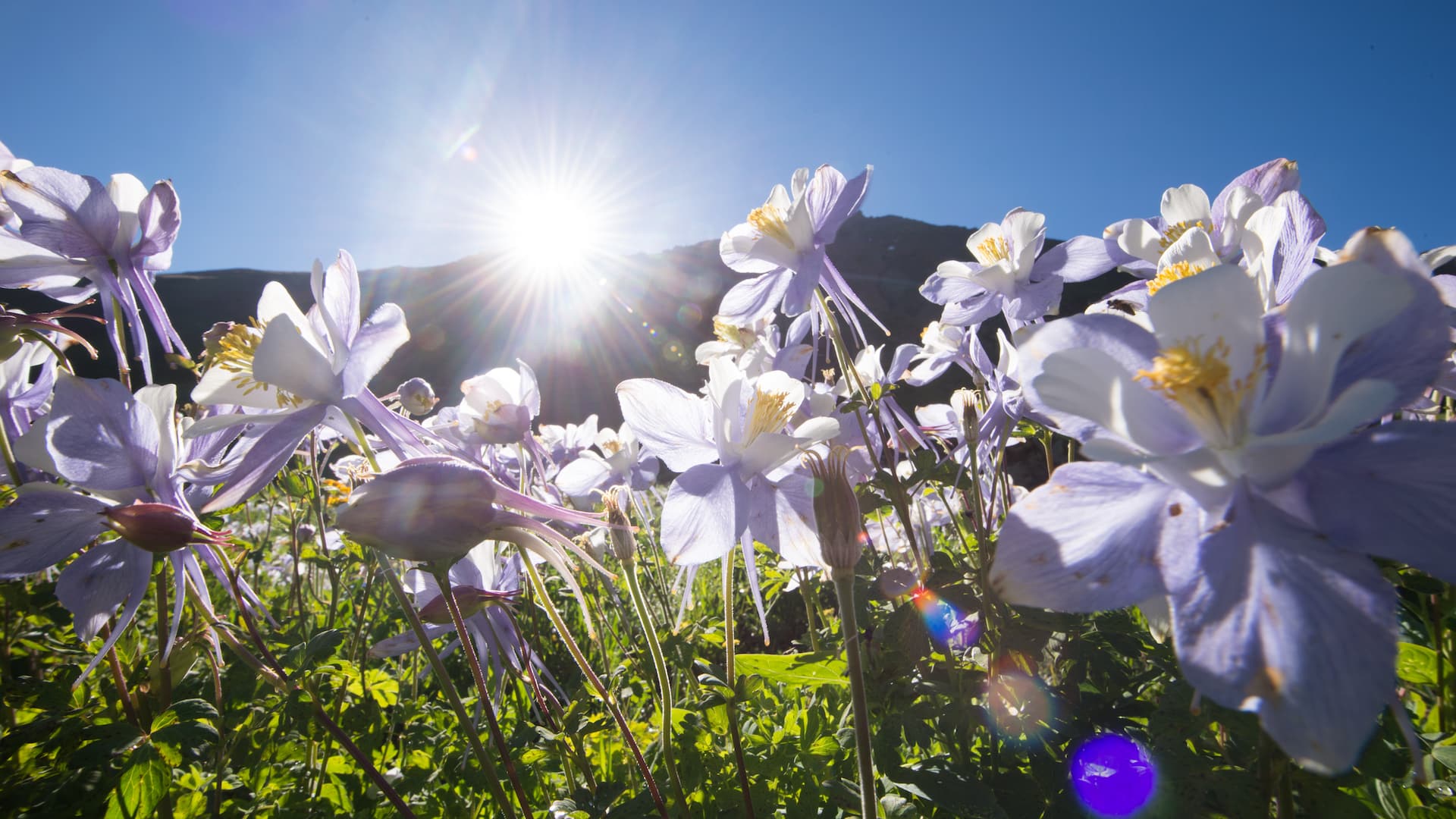In the beginning there were no canyons,” he told me. “There were no canyons in the Great Plains, but instead only broad, open spaces where rich grasses waved in the winds.” Intrigued, I sat and listened as he told his tale.
He told me of a day when the Master of the Earth walked all over the broad land and asked the Prairie, “Where are your flowers?” The Prairie replied simply, “I have no seeds.” So the Master gave his orders to the birds of the air until they flocked from north, south, east and west, each bearing a seed to drop upon the fertile ground. Soon enough the Prairie bloomed with the bright colors of crocuses and sunflowers, of lillies and roses, of aster and clover.
When the flowers had grown and their rich colors had brightened the land, the Master returned to the Prairie and was well pleased. Yet even in his pleasure he observed that some of his favorite flowers were still missing. Once again he spoke to the Prairie and asked, “Where are the clematis and the columbine? Where are the violets and ferns? Where are the flowering shrubs I love so much?” “Master,” replied the Prairie with sorrow, “I have tried, but I cannot keep those flowers, for the sun beats hot upon them and scorches them before they can grow. The wind blows hard upon them and drives them away before they can put down roots. I have tried, my Master. Won’t you help me?”
So the Master spoke to the Skies and in an instant a great bolt of lightning leapt from the heavens to the earth, striking the Prairie with a heavy blow. The Prairie cried out in agony and for a long while mourned the gaping, jagged gash that had been left upon it—a deep, charred scar that contrasted sharply with the bright grasses and vivid flowers around. “Why, Master?” it sobbed in bewildered sorrow.
But soon enough the gentle rains began to pour their cleansing waters into the wound, washing away all that had been seared and scorched. The birds returned once more and dropped their seeds into the depths. And before long, brilliant green mosses sprang up within it, long vines covered in wondrous flowers trailed down it, and every nook was hung with clematis and columbine. Great elms and willows took up their place and stretched their branches toward the heavens high above. Ferns and violets grew in bright clusters along the banks of the river that ran gently through its deepest parts.
This canyon became the Master’s place of special delight, the place where he found peace, rest, and joy, the place where he was most content to dwell. And as the Prairie gazed at all its newfound beauty, all this fresh evidence of life and grace, it could only conclude that the Master of the Earth had been wise and good. It knew now that the brightest of the blooms grow only in the places that have been prepared by the heavy hand of the Master. It knew now that the most beautiful of the flowers grow only in the deep canyons.
.
.
.
.
.
.
.
.
.
I prefer to end the tale there. But for those who would like to know more, here is the rest of what happened that day.
“Won’t you tell me, I asked, what the flowers represent?” “They are the evidences of God’s grace in a life,” he replied, “—the flowers (or fruit if you prefer) that God’s Spirit grants to those he indwells: love, joy, peace, patience, kindness, goodness, faithfulness, gentleness, and self-control. Each of these is as beautiful and as wondrous as the finest flower.” “And which of these grow only in the canyons,” I asked, “only in the dark places?” “Kindness, gentleness, and self-control,” he said. “Love, joy, peace and the others grow well in the wide open sunshine and in the days of ease. But kindness, gentleness, and self-control grow best in the deep canyons, in those places specially prepared by the hand of the Master. If you wish to see these displayed in your life, you must be willing to have your Master prepare you.”
Inspired by Gwen’s Canyon by Ralph Connor.









